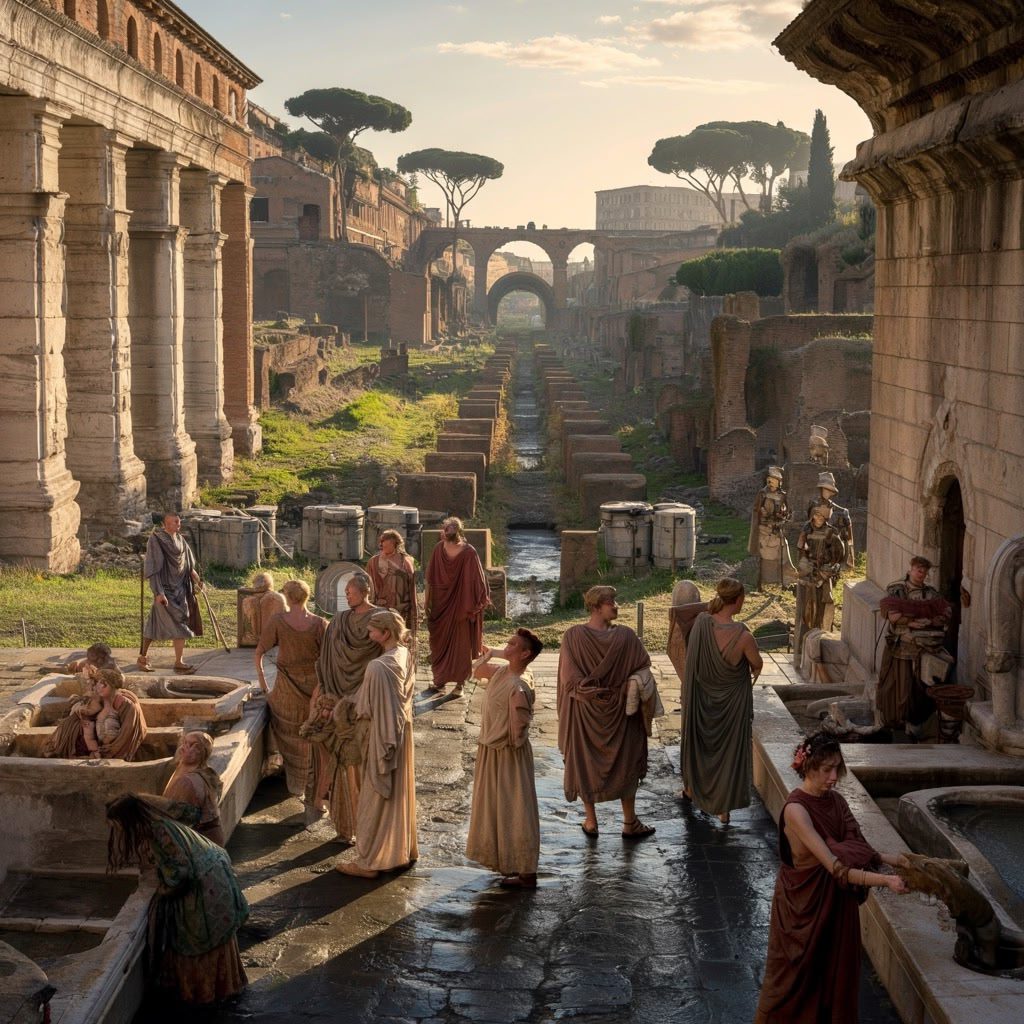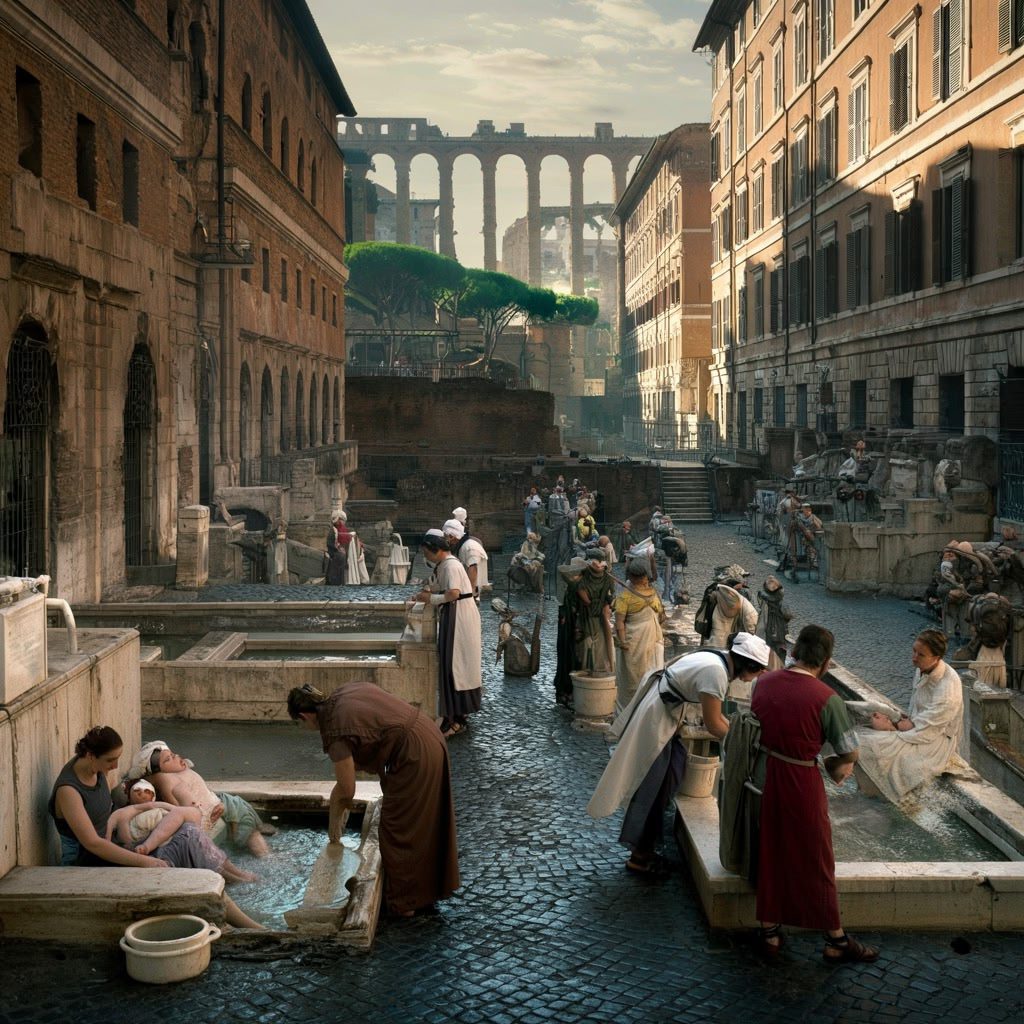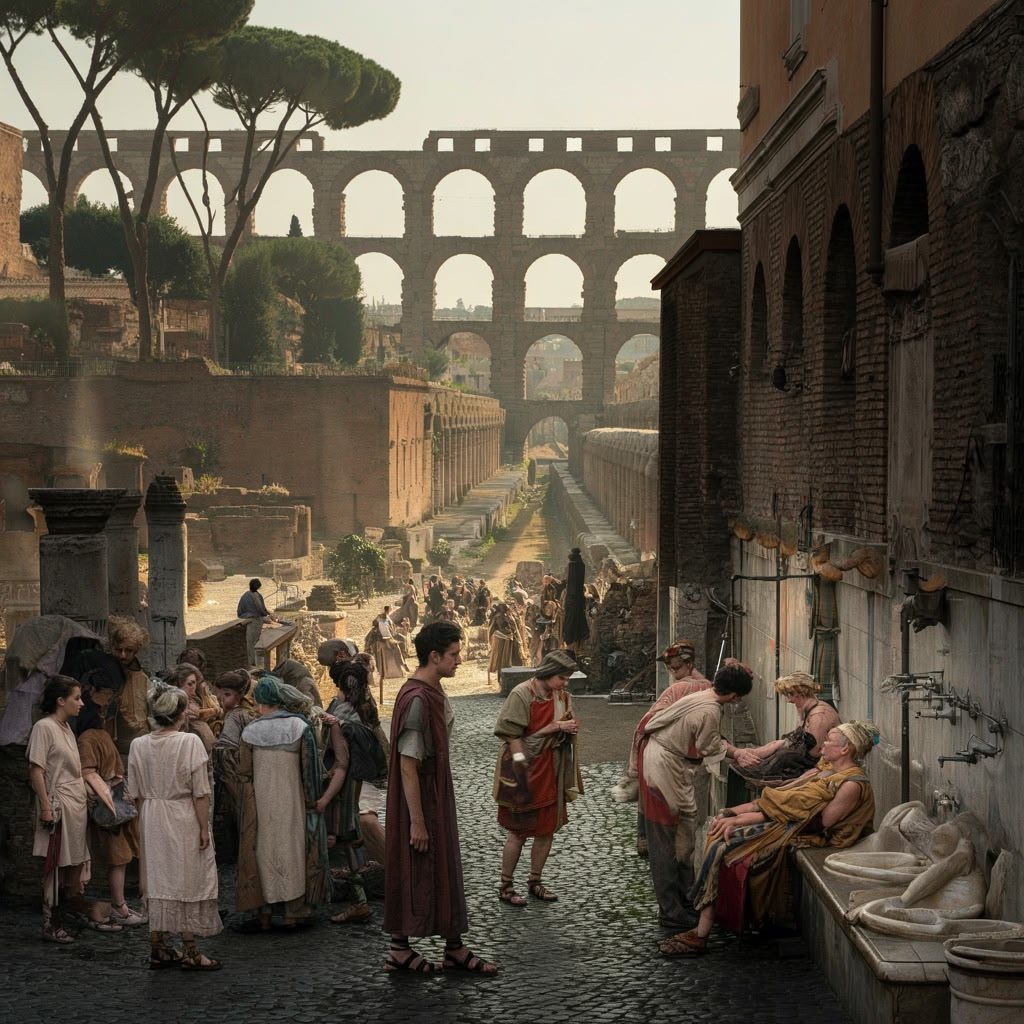Public health campaigns played a crucial role in shaping Ancient Roman society, reflecting a deep concern for public welfare. The effectiveness of these campaigns raises intriguing questions about their impact and legacy.
Public Health Foundations in the Roman Kingdom Period (753-510 BC)
The Kingdom period was when public health efforts in Rome began, mainly due to the influence of King Numa Pompilius. He implemented health-related laws that showed an early form of government taking responsibility for the well-being of its people.
Key areas of focus
The main areas these laws addressed were:
- Maternal health laws aimed at safeguarding childbirth and infant survival rates.
- Abortion regulation, which involved monitoring practices to prevent malpractice and protect public interests, especially during demographic challenges.
These actions indicate a clear effort to maintain the population—a crucial issue for a growing city-state reliant on stable citizen numbers. The laws established by Numa showed an understanding of health as a communal resource, connecting individual health to the strength of the community.
Although basic, the public health efforts during this time were important. They laid down ideas that later Roman periods built upon to create extensive sanitation and infection control systems. The Kingdom’s emphasis on maternal care and reproductive supervision is one of the earliest examples of the state intervening in personal health issues.

Sanitation and Infection Control During the Roman Republic (510-31 BC)
During the Roman Republic period (510-31 BC), sanitation laws and infection control regulations played a crucial role in public health. Legislative measures were enacted to prevent the spread of diseases. For instance, cremations were mandated to take place outside the city limits to reduce the risk of infections spreading within urban areas. Additionally, isolation sanctuaries were established for individuals who were sick, aiming to contain contagious illnesses and safeguard public health. These early attempts at regulating sanitation and controlling infections laid the groundwork for future public health initiatives in Ancient Rome.
Advancements in Infrastructure: Aqueducts and Sewers
The construction of aqueducts Aqua Appia and Aqua Marcia marked significant advancements in Roman public health infrastructure. These aqueducts were engineered to enhance water supply throughout the city, ensuring a more reliable and cleaner source of water for the population.
- The Aqua Appia, built in 312 BC, was the first aqueduct in Rome and provided water for both domestic and public use.
- Subsequently, the Aqua Marcia, completed in 144 BC, further improved water distribution across the city.
In addition to aqueducts, the development and utilization of the Cloaca Maxima sewer system played a crucial role in maintaining public health standards. This extensive sewer network effectively managed wastewater and sewage disposal, reducing contamination risks and promoting overall sanitation within urban areas.
The combined efforts of aqueduct construction and sewer system development significantly contributed to enhancing public health conditions in Ancient Rome.

The Role of Public Baths and Toilets in Urban Sanitation
Public baths and toilets were essential components of urban sanitation systems, serving both practical and educational purposes.
Public Baths: Promoting Hygiene for All
Public baths were more than just places to get clean; they were community hubs that promoted hygiene practices among people from various socio-economic backgrounds. These communal spaces played a crucial role in teaching the importance of cleanliness and sanitation to the public, regardless of their social status.
Toilets: Upholding Sanitation Standards
In Ancient Rome, toilets were critical for maintaining urban sanitation standards. They provided efficient waste disposal systems, which contributed to overall hygiene in densely populated areas. Having proper sanitation facilities like toilets was vital for safeguarding public health and preventing the spread of diseases in crowded city environments.
Medical Practitioners and Their Role in Public Health Campaigns
The appointment and role of medici publici were pivotal in overseeing hygiene efforts within Ancient Rome.
These designated public physicians were responsible for monitoring public health, implementing sanitation measures, and controlling disease outbreaks.
Medici publici played a crucial role in maintaining urban hygiene standards, conducting inspections, and enforcing health regulations throughout the city.
Their presence ensured a structured approach to public health campaigns, combining medical expertise with legislative enforcement to safeguard the well-being of Roman citizens.

Epidemics, Medical Knowledge, and Public Health Responses in the Imperial Period (Starting 31 BC)
The Imperial period saw significant advancements in medical knowledge, but it also faced serious public health challenges. Physicians like Scribonius Largus made important contributions to pharmacology, creating extensive lists of remedies and treatments that informed both everyday care and emergency responses. His work reflected a growing understanding of disease mechanisms and practical approaches to healing within Roman society.
The Impact of Epidemics on Rome
Epidemics posed major threats to Rome’s population and military capabilities. The Antonine Plague (165-180 AD), likely smallpox or measles, decimated large segments of the population, weakening the empire’s stability and its ability to sustain prolonged military campaigns. This epidemic exposed limitations in existing public health campaigns despite advanced infrastructure and medical expertise.
Roman Authorities’ Response
Roman authorities responded by intensifying quarantine measures and reinforcing sanitation protocols. Recognition of zoonotic transmission—diseases spread from animals to humans—highlighted an evolving awareness of infection control, influencing how public health policies adapted during crisis periods.
These developments illustrate the complex relationship between advancing medical science and persistent epidemic threats in shaping Roman public health strategies during the Imperial era.
Valetudinaria Hospitals: A Specialized Approach to Public Health Campaigns
The establishment of valetudinaria hospitals marked a significant development in Roman public health, targeting specific groups within society—primarily soldiers and slaves. These institutions functioned as dedicated medical facilities designed to provide care for injured or ill military personnel, reflecting Rome’s focus on maintaining a strong and healthy army.
Key features of valetudinaria hospitals:
- Military focus: Positioned near forts and military camps, valetudinaria offered treatment for wounds, infectious diseases, and general health maintenance.
- Structured care: Unlike earlier ad hoc arrangements, these hospitals had organized wards, surgical rooms, and staff assigned to patient care.
- Extension to slaves: Some valetudinaria served large slave populations, emphasizing the economic value Romans placed on their labor force’s health.
- Public health integration: Valetudinaria complemented broader campaigns by isolating contagious patients and reducing disease transmission within military and working communities.
These hospitals exemplify how Ancient Rome combined infrastructure with targeted health services to support key societal functions such as defense and labor productivity. The creation of specialized medical centers represented an advanced approach to managing public health challenges beyond urban sanitation.

Assessing the Effectiveness of Ancient Roman Public Health Campaigns
Evaluating the effectiveness of Roman public health campaigns reveals a complex picture. Key achievements can be grouped into two main areas:
1. Sanitation Improvement
- The aqueduct systems, notably Aqua Appia and Aqua Marcia, greatly increased access to clean water, reducing waterborne diseases.
- The Cloaca Maxima sewer system efficiently managed urban waste, preventing sewage buildup in crowded city areas.
- Public baths and toilets enhanced daily hygiene practices for many citizens, contributing to better urban sanitation standards.
2. Control of Epidemics
- Despite sophisticated infrastructure and legislative actions, epidemics like the Antonine Plague still caused widespread mortality.
- Quarantine measures, isolation sanctuaries, and medical oversight helped contain some outbreaks but could not fully prevent recurring disease waves.
- Limited medical knowledge and absence of modern vaccination constrained success in epidemic control.
The effectiveness assessment highlights that Roman public health campaigns significantly advanced sanitation and urban hygiene. However, their ability to manage large-scale epidemics remained limited, reflecting the technological and scientific boundaries of their time.
Challenges Faced by Roman Public Health Initiatives
Public health campaigns in Ancient Rome faced significant hurdles, particularly from pandemics that overwhelmed existing systems. The Antonine Plague (165-180 AD) serves as a stark example of how infectious disease outbreaks could destabilize the empire. This pandemic, likely caused by smallpox or measles, resulted in:
- Massive population decline, reducing the workforce and military recruitment.
- Strain on medical resources and caregivers, including valetudinaria hospitals.
- Disruption of trade routes and urban economies due to high mortality rates.
Despite advanced infrastructure and legislative efforts, these health crises exposed limitations in Rome’s capacity to contain rapidly spreading diseases. Quarantine measures and isolation sanctuaries were insufficient against highly contagious pathogens. The recognition of zoonotic transmission came too late to prevent widespread infection.
The pandemics’ impact extended beyond immediate health effects; they challenged political stability and military strength, revealing vulnerabilities in public health strategies. These challenges highlight the complex reality behind Public Health Campaigns in Ancient Rome—Did They Work?
Legacy and Influence on Modern Public Health Practices
The legacy of Roman public health remains evident in many aspects of today’s public health infrastructure and strategies. Key foundational contributions include:
- Water sanitation systems: The engineering marvels of Roman aqueducts and sewers, such as Aqua Appia and the Cloaca Maxima, established principles of clean water supply and waste removal that underpin modern urban sanitation.
- Urban hygiene promotion: Public baths and toilets set early examples for communal hygiene facilities, demonstrating the benefits of accessible sanitation in densely populated areas.
- Epidemic response frameworks: The Roman approach to isolating the sick, appointing health officials (medici publici), and recognizing zoonotic disease transmission informs current quarantine protocols and disease surveillance practices.
Roman innovations influenced the development of systematic public health policies, emphasizing preventive measures rooted in infrastructure, legislation, and medical oversight. Their experience with devastating epidemics highlighted the necessity of coordinated responses—a concept central to modern epidemic preparedness. The imprint of Roman public health endures through these enduring principles shaping how societies manage community health challenges today.
Conclusion
The effectiveness of ancient Rome’s public health campaigns reveals a complex legacy. Roman initiatives in sanitation, infrastructure, and medical oversight laid crucial groundwork for managing urban hygiene and controlling infectious diseases. Despite remarkable advances, limitations arose from technological gaps and devastating epidemics like the Antonine Plague. These challenges highlight the ongoing tension between public health ambitions and real-world constraints.
Ancient Rome’s experience underscores the importance of sustained investment in infrastructure, professional healthcare roles, and epidemic preparedness.
Modern disease control efforts continue to draw inspiration from these early public health campaigns, demonstrating their enduring relevance.

